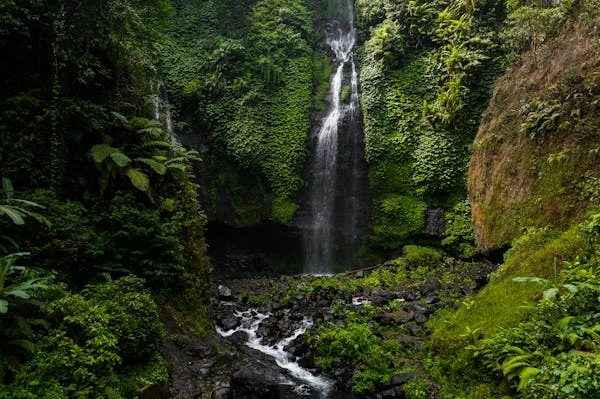Introduction
Pernithia Galnith is known for its untouched forests, flowing rivers, mineral-rich caves, and rare species. Spread over a large area with mixed terrain, it is considered one of the most biologically diverse places in its class. Whether for researchers, environmentalists, or indigenous communities, the region offers many layers of importance.
Natural Landscape and Terrain
The physical setting of Pernithia Galnith includes:
- Tropical and subtropical forests with thick tree canopies
- Rolling hills and highland zones that host migrating birds
- Wetlands and rivers that support fish and amphibians
- Cave networks with fossils and mineral formations
These natural elements form a complete ecosystem that remains largely undisturbed.
Flora and Fauna of Pernithia Galnith
Unique Plant Life
The plant life in the region includes:
- Ancient tree species with large root systems
- Ground plants used in traditional medicine
- Bright mosses and glowing fungi are found in damp caves
Wildlife Highlights
Animals found in Pernithia Galnith include:
- Insects: Colorful beetles, rare butterflies, and native bees
- Birds: Both seasonal migratory birds and region-specific species
- Reptiles and Amphibians: Frogs, lizards, and turtles not seen elsewhere
- Mammals: Small forest mammals that depend on tree canopies and rivers
Many of these species are endemic, meaning they are found only in this region.
Role in Climate Stability
Pernithia Galnith helps regulate the regional climate by:
- Maintaining consistent rainfall through tree transpiration
- Reducing soil erosion with dense root systems
- Absorbs carbon dioxide and supports cleaner air
These natural functions are vital in protecting nearby human settlements and farming areas.
Geological Wonders
The geological landscape is equally important:
- Limestone caves that store groundwater
- Unique rock formations formed over millions of years
- Hot springs and mineral-rich streams beneficial to local health
These features attract researchers, explorers, and wellness tourists.
Cultural and Historical Importance
Connection to Indigenous Traditions
Local communities have lived in and around the region for generations. Their practices include:
- Sustainable hunting and gathering
- Herbal medicine based on forest plants
- Spiritual ceremonies are held in natural temples or caves
Oral History and Folklore
Legends speak of:
- Tree spirits guarding sacred zones
- Hidden valleys only visible to the pure-hearted
- Rain-calling rituals performed during droughts
These stories enrich the cultural identity of the region and promote respect for nature.
Threats to the Region
Despite its value, Pernithia Galnith faces several serious threats.
Human-Induced Pressures
- Deforestation for timber, farming, and infrastructure
- Illegal mining is disrupting the soil and water balance
- Pollution from factories and waste disposal
Ecological Disruptions
- Invasive plant species are choking out native vegetation
- Climate change is affecting rainfall, breeding seasons, and vegetation cycles
- Fragmentation of wildlife corridors, leading to reduced animal movement
Conservation Actions Underway
Efforts to save and restore the region include:
Government Initiatives
- Protected area status to prevent large-scale logging
- Laws against mining and illegal trade of rare species
- Investment in forest restoration programs
Community-Led Projects
- Training programs for sustainable farming
- Support for local tourism that respects the environment
- Partnerships with environmental NGOs
Scientific Support
- Regular biodiversity surveys
- Use of drones and sensors to monitor ecosystems
- Field labs for botany and zoology students
Overview of Key Aspects
| Feature | Description |
| Region Type | Forests, rivers, hills, wetlands |
| Key Species | Endemic insects, frogs, birds, and plants |
| Threats | Deforestation, pollution, climate change |
| Conservation Focus | Habitat protection, local education, scientific study |
| Cultural Relevance | Spiritual sites, traditional knowledge, folklore |
| Climate Role | Rainfall balance, carbon absorption, erosion control |
How Tourism Can Help
Responsible Eco-Tourism Activities
- Guided forest walks with local experts
- Bird watching and photography tours
- Cave exploration with trained professionals
- Visits to medicinal plant gardens
Benefits of Eco-Tourism
- Funds raised go to protection and community welfare
- Promotes awareness among national and international tourists
- Encourages the younger generation to value their environment
Future Plans for Sustainability
To ensure long-term protection of Pernithia Galnith, key future steps include:
- Expanding buffer zones to reduce urban pressure
- Digital mapping of ecosystems to track changes
- Introducing nature education in nearby schools
- Supporting local crafts and forest-based livelihoods
Conclusion
Pernithia Galnith is a region that blends nature, science, and culture into one meaningful whole. Its role in maintaining biodiversity, supporting cultural practices, and stabilizing the climate makes it an irreplaceable part of the planet’s natural heritage. Through careful planning, public education, and sustainable development, we can ensure that Pernithia Galnith thrives for generations to come.
FAQs
What is Pernithia Galnith known for?
Pernithia Galnith is known for its biodiversity, untouched natural landscapes, rare wildlife, and strong cultural connection with local communities.
Why is Pernithia Galnith ecologically important?
The region supports many rare and endemic species, regulates rainfall, improves air quality, and plays a major role in regional climate stability.
What are the main threats to Pernithia Galnith?
Key threats include deforestation, industrial pollution, illegal mining, introduction of invasive species, and the impact of climate change.
How are local communities involved in conservation?
Communities support conservation through eco-tourism, sustainable farming, forest education, and participation in protection initiatives.
Can tourists visit Pernithia Galnith responsibly?
Yes, eco-tourism is welcome. Visitors can join guided tours, birdwatching trips, and nature education activities that support local conservation.






